Yellow Barn Collaboration Brings 9/11 to Vermont
Howard Weiss-Tisman writes for The Brattleboro Reformer:
In a rehearsal room on The Yellow Barn campus Monday Kelly Butler was exploring the place where memories and music meet.
Butler lost a family member in the terrorist attack on September 11, 2001, and she is one of the six family members of the support group, Tuesday's Children, who is working with Yellow Barn composers this week.
Tuesday's Children is a non-profit organization that was established to support the families of 9/11 victims.
In the rehearsal room Butler, an actress, was sitting at a desk, writing words on cardboard and then ripping off pieces that she would drop to the floor.
To her left Tamzin Elliott, one of the composers enrolled in the Yellow Barn Young Artists Program, was sitting behind a piano, while two violinists looked over a composition.
Butler and the three musicians were collaborating on the music and dialogue, which will be presented during two performances in Putney this week.
Across the room an adult musician and actress were offering suggestions on when to intersperse the dialogue into the music. The mentors, musicians and actress went back and forth, trying different arrangements until it was time to break for the afternoon.
"Collaboration has always been a very important part of what goes on during the Young Artists Program," said Yellow Barn Executive Director Catherine Stephan. "But this is different. We have never done something like this where we are asking our young composers to incorporate someone else's story into their own work."
Every summer young artists travel from across the county, and all over the world, to study at the Yellow Barn Young Artists Program. This year 28 instrumentalists and composers are spending 18 days in Putney for the Young Artists Program.
About a year-and-a-half ago Yellow Barn Young Artists Program Co-Director Seth Knopp met with Alice Greenwald, the director of the 9/11 Memorial Museum. A mutual friend arranged the meeting and Greenwald told Knopp that the museum was exploring different ways for the family members of 9/11 victims to tell their stories.
"There is a very strong vein of remembrance that runs through art," Knopp said Monday while taking a break from the work he does with the young composers. "I though this program would be a potentially fruitful place to create music to memorialize these stories."
In the Yellow Barn rehearsal studio Monday Butler let the music build, and then fade.
"I am many stories," she said, writing words on a piece of cardboard and then ripping it up. "I wish I had more memories. If I don't remember then who will."
Composers typically bring their life's experiences to each piece of music, and the source of the Muse has been a topic of wonder and discussion for centuries.
But to come face to face with someone who has experienced profound personal loss, while at the same time shared that loss with a nation based on an historic event like 9/11, has been an inspiration for everyone involved.
"The pieces are not necessarily about their stories," he explains. "It has been 13 years and for a lot of these children they can't remember their parent; they are trying to both hold on, and move on. Hopefully we are able to create something redeeming out of all of this."
Celebrating with Robert Mann
Cellist Bonnie Hampton offers this tribute:
Photo by Ansel Adams
For Robert Mann
Who was able to dream of achieving the Mountain and then step by step,
finding the way to get there. We Honor You!Robert Mann has had an enormous impact on American Chamber Music, blazing the trail for hundreds of musicians to find a life in the exploration and realization of some of the greatest music to be written for that medium. He is a complete musician in every sense of the word; a superb violinist and Quartet leader, a composer, teacher, conductor and mentor to so many musicians and just dearly loved by a vast audience all over the world. Much has been written about his achievements and those of the Juilliard String Quartet, but it is perhaps through their recordings and those of Robert himself that we are able to experience for ourselves the depth of his Legacy. He is indeed a true American National Treasure.
Violinist Mark Steinberg adds:
It was not a particularly auspicious beginning. As I took a breath, nervously preparing to play the d minor Bach Allemande in my very first lesson with Robert Mann, he yelled “Hold on!” I was unknowingly about to use my bow to do battle with the chandelier I had placed myself underneath. Somewhat rattled, I stepped to the side, managed to muster some semblance of concentration, and played the movement. I had long been awaiting the following moment, eager to have the chance to learn from an artist of Mr. Mann’s stature. I gazed at him expectantly. “Sit down,” he told me. I did. “The first thing you need to know is I didn’t like that at all.”
I might have been devastated, I suppose, but I wasn’t. From the next moments and through the next few years I was initiated into a world of deep engagement with the very elements of the music at hand. I’m not sure I even recognized music as being made up of such elements before. It was intoxicating, and dizzying, and thrilling. I had some very long lessons that first fall, and Mr. Mann’s razor-sharp listening and penetrating intelligence went to work on my playing. When he went on a European tour with the quartet in the late fall I missed my lessons. But I was also grateful for the chance to sort out all the information and all the challenges that had been thrown at me. It was a time for self-preservation, a time to stop and make sure my head wouldn’t explode.
I looked forward eagerly to the adventure of each lesson, each opportunity to be guided through an encounter with the score at hand. There was a visceral, hands-in-the-dirt quality to the work. The exuberant messiness of the process was its own reward. The challenge posed by the multiplicity of possibilities inherent in each composer’s notation was an invitation to extract something eloquent and true. I learned to listen to connections between notes and events with clarity and intensity, to begin to know what the precise shaping of a note, of a group of notes, of a phrase did to the message I was offering. I learned the verb to bowdlerize, and how to begin to realize when I was guilty of such a sin. Not to be forgotten, in a lesson: “That was a great performance...(long pause, begin self-congratulations)... to eat dinner to.” Robert Mann could be master of the witty put-down, but always it seemed a sort of epigraph to an essential lesson about to unfold.
Share a personal story or write a tribute to Robert Mann by emailing Catherine Stephan, Executive Director
Images from Marfa, TX
Images from Marfa, Texas
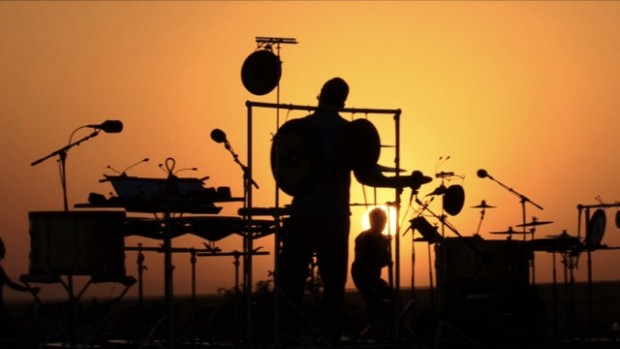
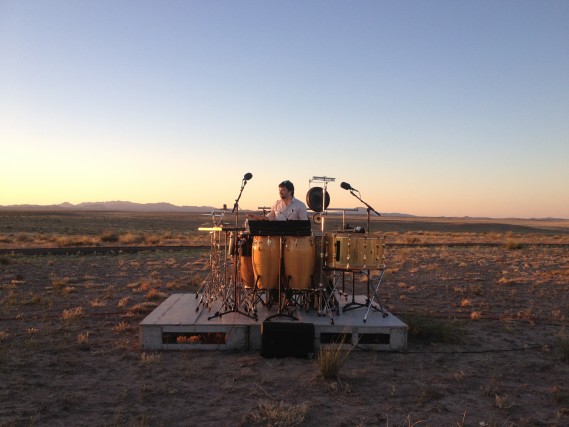
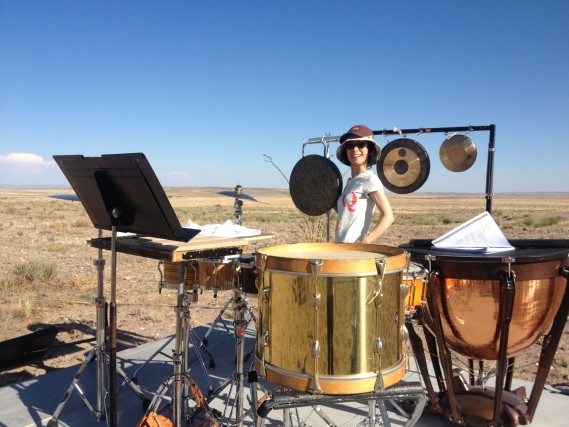
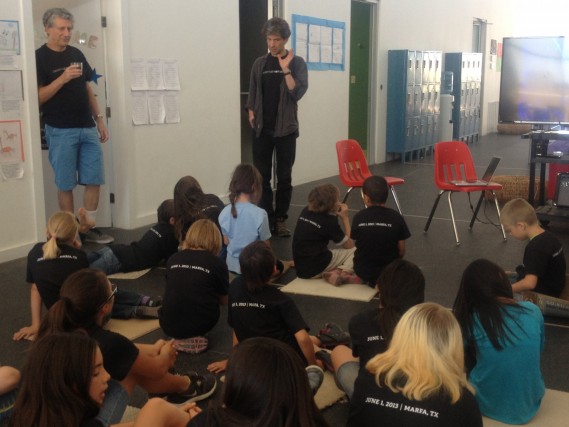
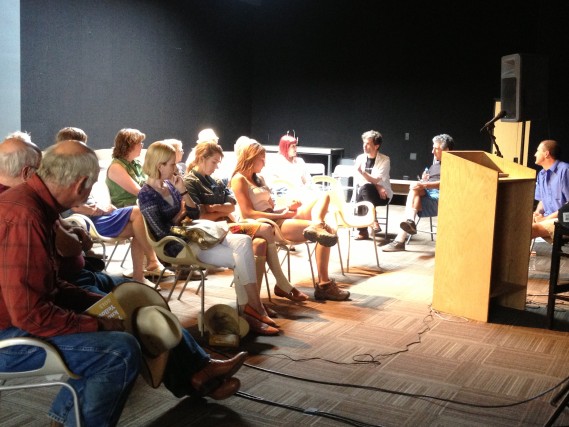
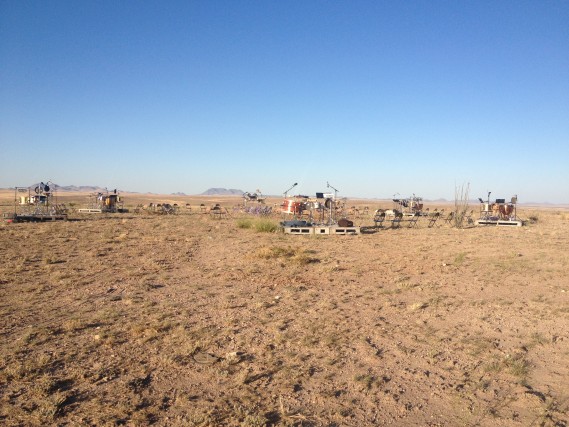
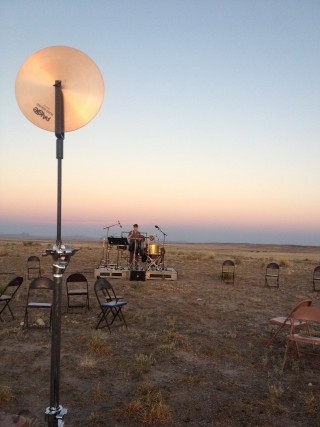
On May 29th Music From Yellow Barn traveled to Marfa, Texas, a small town sixty miles from the US - Mexico border, to present Gérard Grisey's Le Noir de l’Etoile, on a remote desert ranch. This work, based on the discovery of pulsars and composed for six percussionists placed around an audience, had never been performed out-of-doors. 250 people from as close as Marfa and as far as New York witnessed this landmark event.
Remembering 9/11 through new music
On June 20, 2013 family members from Tuesday’s Children, an organization committed to providing long-term support and services for the children of 9/11, will travel to Putney for Yellow Barn’s Young Artist Program, participating with its musicians (composers and performers ages 13-20) in the process of creating new music that memorializes and brings unique perspective to the events of 9/11. YAP composers Christopher Theofanidis, Stephen Coxe, and Steven Mackey will guide a collaborative composition along with YAP performance faculty, often drawing on personal experience with writing and performing commemorative pieces, including Christopher Theofanidis's opera Heart of a Soldier, which was commissioned by the San Francisco Opera for the 10th Anniversary of 9/11.
During their week in Putney each of the six Tuesday's Children participants will collaborate with a YAP composer and ensemble, resulting in six short bagatelles that together form a commemorative piece, which will receive its premiere performances on June 27 and 28. The Tuesday's Children participants also will be working independently and as a group on memory projects based on their own interests (art, theater, photography, and writing) under the guidance of mentors from those fields who will be joining the YAP community on campus at the Greenwood School. Clifford Chanin, Director of Education at the National September 11 Memorial and Museum, will provide additional insight and lead a discussion with everyone involved with the project.
In addition to performances of the new work, audiences will have the opportunity to view the participant's independent projects and on June 26 participate in a public conversation with Clifford Chanin about the events of 9/11, memory, and memorialization.
Learn more about Yellow Barn's partners
Tuesday's children participants
Kelly Butler
Montana Cortez
Aidan Fontana
Robert Pycior
Juliette Scauso
Richard Wang
Mentors
Edie Bresler, photography
Michele Burgess, art
Michael Fleming, poetry
Bill Kelly, art
Bonnie Mennell, art
Barbara Whitney, theater
Yellow Barn's 2013 Summer Artwork

Harry A. Rich, Monument to Unknown Mountain Poets, 2010, 48×48", acrylic on canvas
Monument to Unknown Mountain Poets is part of a series honoring the thousands of unheralded poets, playwrights, music makers, etc., who have sought out the unseeable, spiritual mountain legacy found here today among our Taconics, Greens, and Whites—a legacy from a time not so long ago when our mountains were the height of the Central Asian Himalayan range. That original soaring mountain essence is alive today, drawing and nurturing us all.
About Harry Rich
Harry Rich’s paintings grow out of the soil of the New York School, remaining within the Modern tradition. A graduate of Pratt Institute (BFA) and Wesleyan University (MA), he moved to Sandgate, Vermont, with his wife the painter and writer Mallory Rich fourteen years ago, confident that Vermont’s aesthetic charms would not influence his studio work. Wrong!
A lifelong painter, Harry has taught, founded enterprises, consulted for profits and nonprofits, along the way receiving international, national, and regional honors for design. Asked to give a brief statement about his approach to creative work, he quoted Michael Kimmelman, former New York Times chief art critic who wrote in 1999, “Making music is a way to be in touch with the divine.” “I would include the word ‘painting’ with Kimmelman’s ‘music’,” Harry said.
Looking back on a Yellow Barn Artist Residency
Cellist Jay Campbell offers the following comments about his artist residency with pianist Conor Hanick (video and audio recordings below):
In his 1909 publication Debussy, the French musicologist Louis Laloy writes, "In all groups of society, in all countries, beyond all borders and beyond the seas, the purest music of today recruits unknown friends. In this sense, the only true sense, music may be called universal. And this power is more sure than ever guaranteed to music by its recent progress." Interestingly, by using the word "progress", Laloy makes no distinction between established tradition and the many directions to which it develops over time—rather, they are the branches and sub-branches of a single trajectory. Like all other things, music history is forged walking backwards into its own future while observing at the past. As Arnold Schoenberg writes in his Style and Idea:
"My originality comes from this: I immediately imitated everything I saw that was good...I acquired it in order to possess it; I worked on it and extended it and it led me to something new. I am convinced that eventually people recognize how immediately this 'something new' is linked to the loftiest of models that have been granted us. I venture to credit myself with writing truly new music which, being based on tradition, is destined to become tradition."
It is with that in mind that an array of composers have been assembled, all of whom are also eagerly looking to what is ahead: the meticulously expressive quality of Matthias Pintscher's haunting Figura V / Assonanza, gently hovering against a canvas of silence, Claude Debussy's homage to the French clavecinists Couperin and Rameau, Charles Wuorinen's intensely lyrical use of the 12-tone method, Carl Philipp Emanuel Bach's emotionally intuitive yet harmonically progressive surface, and so on. While the composers presented are probing retrospectively, the breadth of creativity is staggering—far from derivative, these composers look to the past to achieve unique and innovative design.
Ultimately, the goal of this program is to explore a dialogue between the rich and varied musical language of today contrasted against a framework supplied by pioneering Baroque composers. But rather than contrasting the surface-level disparity between Baroque and modern repertoire, such as tonal systems, perhaps what is more alluring lies in finding the connections, contrasts, and the grey area between two compositional orientations: the structurally rich, disciplined approach of those such as Charles Wuorinen and J.S. Bach, and a more free, improvisatory mode of composition, like that of C.P.E. Bach and Wei-Chieh Lin. These categories are of course by no means strict ones—certainly none of the composers or works belong exclusively to a singular compositional approach, but by making those connections between Baroque and contemporary works, light will hopefully be shed on the ècriture of the composers represented, helping to make the compositional activity itself more visible.
Jay Campbell and Conor Hanick performed their program at Next Stage in Putney on March 1, 2013 and at the Nasher Sculpture Center in Dallas under the auspices of Music From Yellow Barn on March 8, 2013. The following video of the first set from their performance at the Nasher Sculpture Center exemplifies the aims of their project. (video courtesy of Andrew Baldwin)

